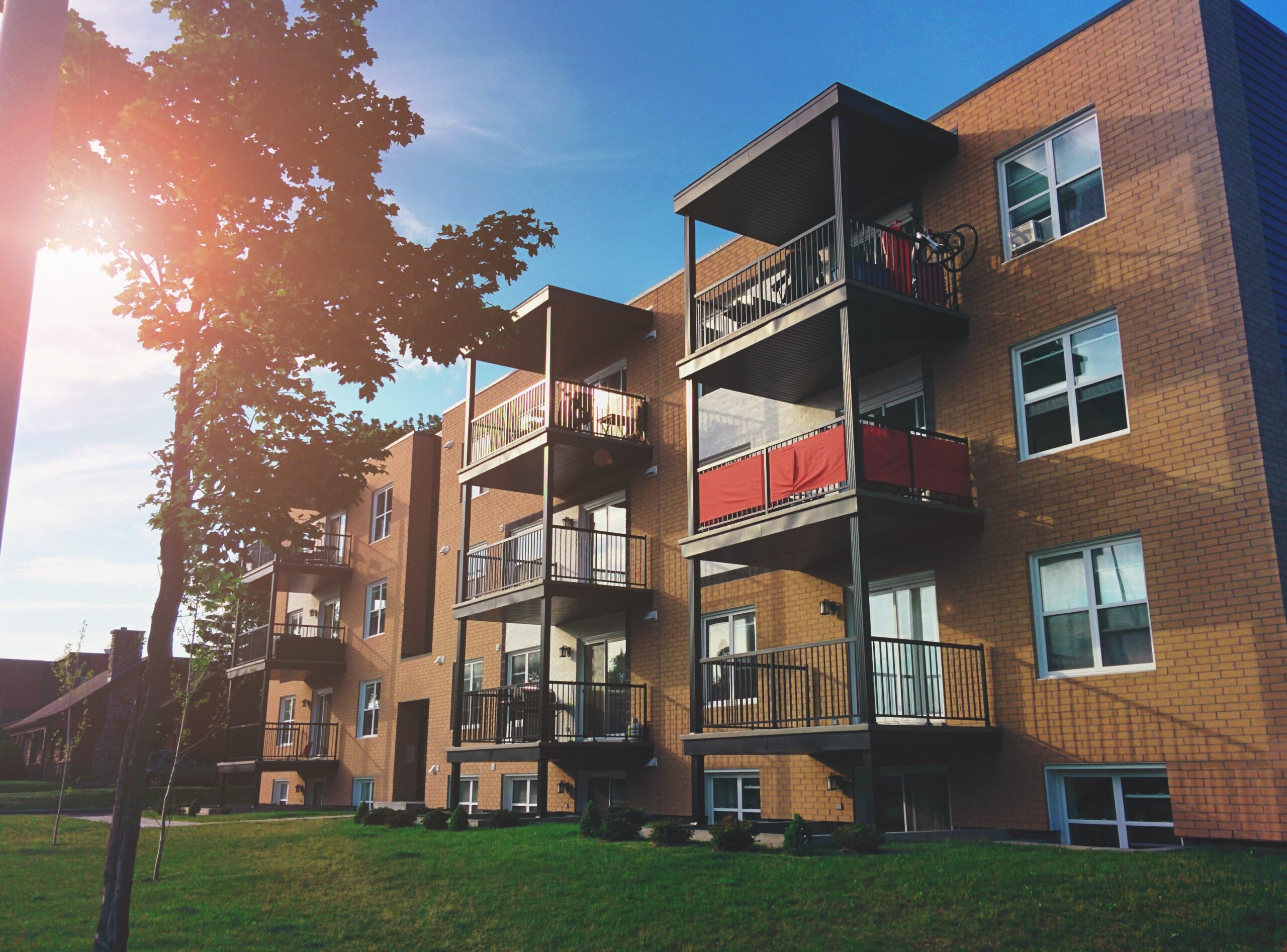Single Family vs Multi Family Investing: Which Is Best?
As a high-income professional, you have an important choice to make. You can keep working the same way for 30+ years and pay a lot of taxes, or you can learn to work smarter and invest in assets that can help you make money and pay fewer taxes.
There’s no right or wrong answer – it’s all about what you want in life.
Many of our Passive Investor Circle members love investing in rental property. When you’re just starting, deciding whether to buy a single-family home or a multifamily apartment complex can be hard.
In this article, we’ll explain the main differences between these two kinds of investments, including their benefits and challenges. This will help determine the best option for you and your financial goals.
Key Takeaways
- Single-family rentals typically have a lower cost of entry and are easier to manage, making them an ideal option for the first-time investor.
- Multifamily properties offer higher cash flow potential and economies of scale due to a multiple numbers of units, diversification of risk (multiple tenants), and tax benefits.
- Knowing the differences between single-family property and multi-family rentals is very important when deciding which one is the best choice for you and your money. You should consider legal issues, how much money you could make from renting the property, how hard it is to manage the property, and how often tenants move in and out.
Key Differences Between Single Family And Multi Family Properties
Single-family residences are typically standalone homes, whereas multifamily housing consists of two or more units in a single structure.
This difference impacts the legal considerations and overall property size.
#1. Legal differences and property size
Understanding the differences between single-family and multifamily buildings starts with recognizing their legal differences and property size.
Single family homes
These are designed to occupy a single household which means they contain one dwelling unit. Typically these require less upfront capital to invest in vs. a multifamily property.
Multi-family property
On the other hand, acquiring multiple housing units under one roof can provide benefits that allow you to scale faster as they typically have reduced maintenance costs per unit.
For instance, if you were to invest in a fourplex vs. single-family home, you’d potentially have four tenants paying each month instead of one.
#2. Rental income potential
The rental income potential is one of the most significant factors when deciding between these investment properties.
As previously mentioned, you can expect higher returns from multifamily homes with little to no more effort required than a single-family home.
But something to consider is this. Having a single family investment could attract higher-paying tenants willing to pay more for privacy and additional amenities such as:
- pool access
- larger yards
Remember that if you only have one unit to rent vs several, effective marketing strategies are necessary to prevent a prolonged vacancy rate.
#3. Property management challenges
Typically managing single-family units are easier vs multifamily as you only have to deal with one tenant.
With multi-family homes, managing can become more time-consuming and stressful, especially if you try to do it yourself instead of outsourcing to a property manager or management company.
If you decide to self-manage either type of property, you’re responsible for:
- collecting rent
- maintenance
- repairs
- tenant screening
#4. Tenant turnover and vacancy rates
Tenant turnover and vacancy rates are other important factors to consider.
Typically, single-family homes have longer lease periods resulting in less frequent turnover. This can be very attractive for the new real estate investor.
Multifamily properties have multiple units, which give real estate investors a buffer against vacancies. If one tenant moves out, there are other units that can still bring in cash flow.
From a property management standpoint, tenant screening should be performed no matter what property you’re trying to lease. This helps to ensure reliable tenants who can likely pay their rent on time and renew their lease before it expires.
Don’t Miss Any Updates. Each week I’ll send you advice on how to reach financial independence with passive income from real estate.
Sign up for my newsletterAdvantages Of Single Family Investment Properties
Many first-time investors are attracted to single family investment properties because they have a lower cost of entry and are easier to manage.
Let’s take a look at some of the other advantages.
#1. Lower cost of entry
One of the biggest advantages of single family over multi family homes is the lower cost of entry.
Typically single-family homes require less upfront capital resulting in lower down payments than multifamily properties.
I’ve read about people in the real estate space worth several millions of dollars that started with a single-family rental. One of the people that started with this strategy is billionaire Grant Cardone.
If you haven’t heard of how he got started, check out this interview I had with him on my YouTube channel:
#2. Easier management
If you’re a busy professional juggling raising a family and running a business/practice, a single-family home could be the right fit. These require less time and management than multi-family homes.
With single-family homes, you’ll only deal with one tenant, whereas owning multifamily property means more tenants and more potential issues.
But remember, having more tenants can also mean more significant cash flow potential.
#3. Higher appreciation potential
Another single-family home advantage is appreciation. Typically, these properties have a higher appreciation potential than multifamily properties.
This is due to:
- location
- market demand
- desirable neighborhood features
#4. Greater financing flexibility and re-selling
As previously mentioned, you have more financing choices for single-family homes, as getting a loan is typically easier.
When it comes time to sell, it’s also easier as, typically, more people want them for themselves and not just as an investment.
Advantages Of Multi-Family Investment Properties
Here are four advantages of investing in multi-family investment properties.
#1. Higher cash flow potential
In general, multifamily property has higher cash flow potential than single-family property as rent is collected from multiple units within the same property.
This helps to lower rental income volatility as it spreads risks across several tenants instead of one.
Additionally, multifamily investments tend to have lower cap rates than single-family homes, increasing their profitability over time.
A cap rate is a metric used to evaluate the profitability of a real estate asset. It’s found by dividing the net operating income by the property’s value (NOI/value = cap rate).
#2. Economy of scale
One of the most significant multifamily advantages people like Grant Cardone tout is the concept of “economy of scale.”
Higher profit margins are obtained as owning multiple units allows you to benefit from volume discounts on services like maintenance and repairs. You’ll also benefit from having lower property management fees.
#3. Diversification of risk
Another advantage of multi-family investment properties is risk diversification. By owning multiple units in one property, Investors can minimize the impact of losing a moving out by owning multiple units in one property.
For example, if one tenant moves out, others still pay rent. But if you own a single-family home that becomes vacant, no income is coming through the door until it’s occupied again.
Having multiple units offer more protection against economic downturns as they provide a diversified portfolio that can withstand market fluctuations.
#4. Tax benefits
Owning investment properties comes with various tax benefits that reduce the burden of taxes on rental income.
For single-family homes, investors can claim deductions on:
- property taxes
- mortgage interest payments
- operating expenses
Multi-family properties offer more significant tax benefits due to their eligibility for bonus depreciation and cost segregation studies that allow them to accelerate claimed deductions on improvements made on the property shortly after purchase.
Join the Passive Investors CircleHow To Decide Which Investment Is Best For You
As with any decision-making process, it’s best to start by analyzing your goals to point you in the right direction.
Analyze your investment goals
Here are some key factors to consider:
1. Return on investment (ROI): Determine how much profit you’d like to make and what risk level you’re comfortable with.
2. Cash flow: Determine how much monthly passive income you want your property to generate.
3. Time commitment: Determine the amount of time you can put into property management.
4. Appreciation potential: Consider the potential for long-term growth and appreciation in the property’s value.
5. Tax benefits: Assess the tax implications of owning different types of properties.
Once you analyze these factors, you can better determine whether a single-family or multi-family investment property aligns better with your investment goals.
Evaluate your financial resources
As with any investment decision, it’s important to consider your financial situation. This is no different when deciding between single-family and multi-family properties as an investment. Here are 5 key factors to evaluate:
1. Budget determination: Evaluate your budget (income, expenses, debts, etc.) to calculate how much you can afford to invest in a property. Typically, multifamily properties have higher upfront costs vs single-family homes.
2. Financing options: Evaluate the interest rates, terms, and requirements, along with the different types of loan options, before purchasing a property.
3. Identify your risk tolerance: Determine how much risk you’re willing to take. A less risky option would be a single-family home investment, but they may offer lower returns. On the other hand, multi-family properties have higher potential income but come with more management challenges.
4. Factor in ongoing expenses: It’s a good idea to make sure you can afford ongoing rental expenses (maintenance costs, property taxes, insurance, utilities, etc.) while still generating a positive cash flow.
5. Analyze potential returns: Always evaluate the return on investment (ROI) for single-family and multi-family properties based on factors such as rental income, appreciation potential, and market demand.
Research The Local Market
Here are some key steps to take when it comes to researching the local market:
1. Job market and economic indicators: It’s easier to attract tenants to ensure a low vacancy rate in areas with a strong job market and affordable cost of living.
2. Research rental prices: Find out what the going rental rates are for both single-family and multi-family properties in the area. This will give you a sense of whether or not investing in rental homes will be profitable.
3. Determine the demand for rental properties: The vacancy rates, tenant turnover, and overall population growth can help you determine if there is high demand for rentals.
4. Property regulations: Pay attention to regulations in the area you’re looking into, including taxes, landlord-tenant laws, zoning laws, and building codes.
5. Recent property sales data: To find out how much homes are selling for in your desired area, check ou the recent property sales data.
Use An Experienced Real Estate Agent
It’s always a good idea to seek professional advice when you need help in areas you want to improve.
Here are some reasons why consulting with an experienced real estate agent to decide between single-family or multifamily property can help:
1. They know a lot about the area’s market and can share valuable insights about what’s popular, rent costs, and how much properties are worth.
2. They can help determine your access to financial resources, evaluate your investment goals, and find properties that fit your budget and what you like.
3. They know different financing methods for buying properties, like conventional loans (Fannie Mae, Freddie Mac), portfolio loans, private lenders, and government-backed programs like FHA and VA loans.
4. They can help you with the complex legal processes when you buy or sell a property, ensuring that all transactions comply with state and federal laws.
5. They can assist you in finding reliable people to manage your property or give you tips on dealing with renters so you have fewer vacancies to make more money.
6. Using their skills and knowledge, you can make informed decisions to help you have a successful real estate portfolio.
Conclusion
Ultimately, deciding to invest in single-family or multi-family properties depends on your personal goals and financial situation. Single-family homes are a lower-cost entry point with easier management, while multifamily properties offer higher cash flow potential and economies of scale.
Regardless of which option you choose, research the local market and consult with experienced professionals before making any investment decisions.
Join the Passive Investors CircleFAQs
Is multifamily investing still a smart choice?
Investing in multifamily units (i.e., apartment buildings) can still be a smart choice for your money, depending on the location and condition of the property. They’re a great way to generate multiple income streams from several tenants, which may lead to more consistent rental income.
What’s one drawback to renting out a single-family house?
One of the main drawbacks to renting out single-family properties is that if the property becomes vacant, there’s no other source of income coming in.
What makes single-family properties a better choice than multi-family properties for some investors?
Single-family homes can be a better choice for some investors because they are generally easier to manage with fewer tenants and units. Additionally, they tend to have a broader market appeal, making them easier to sell.





